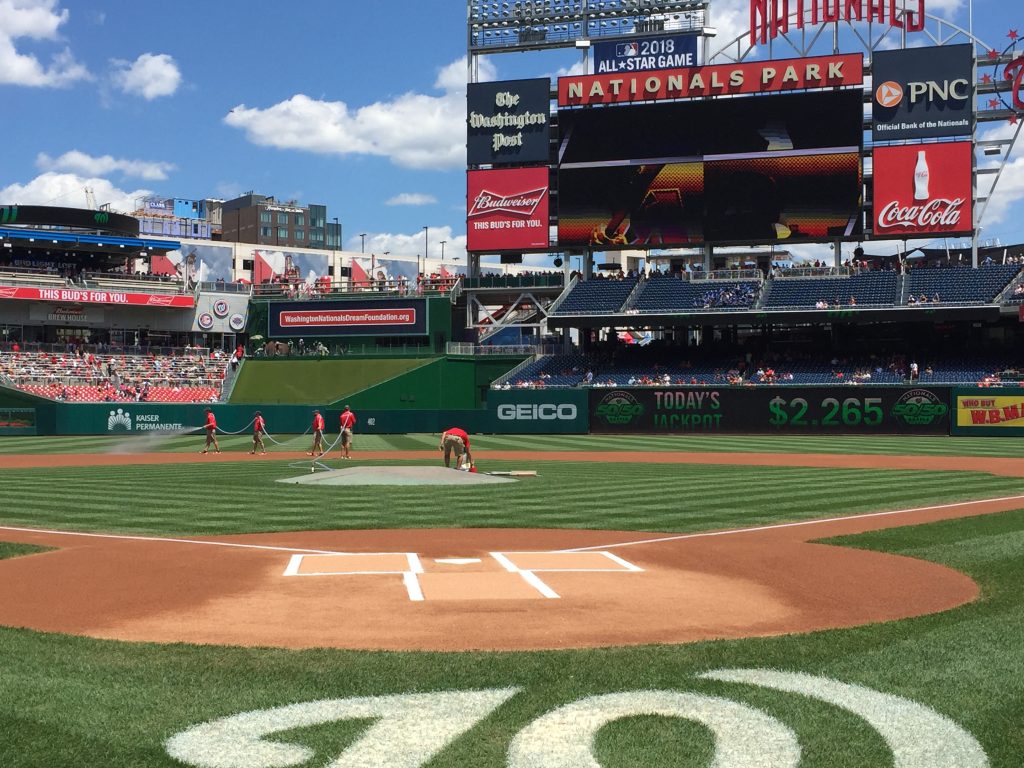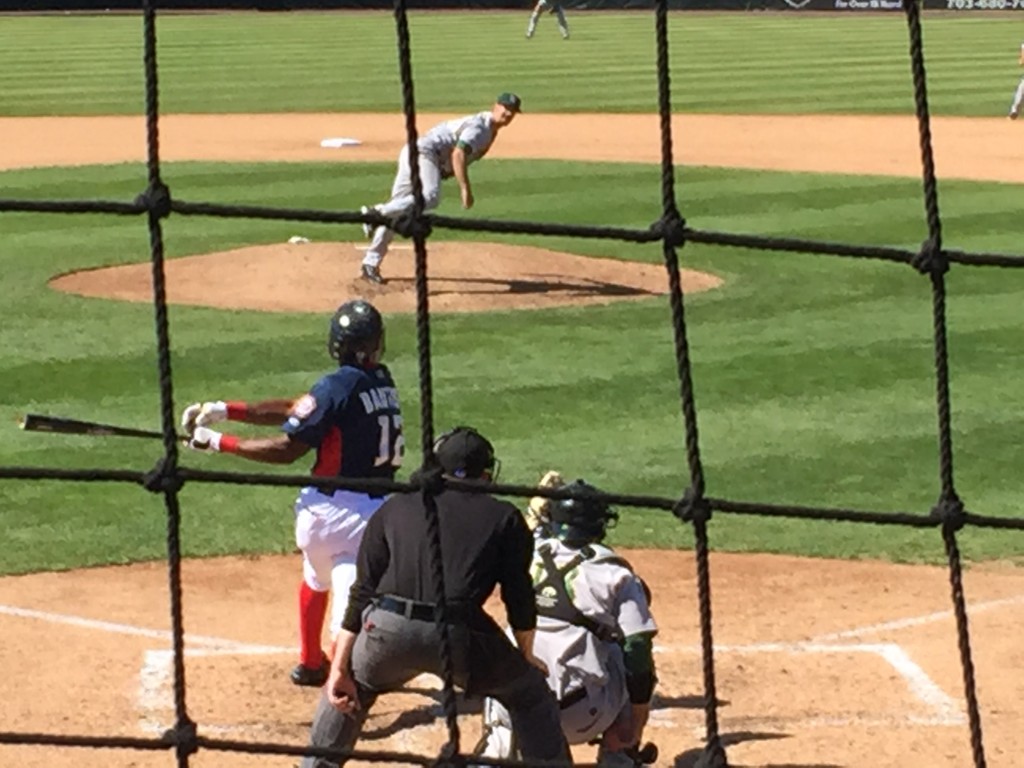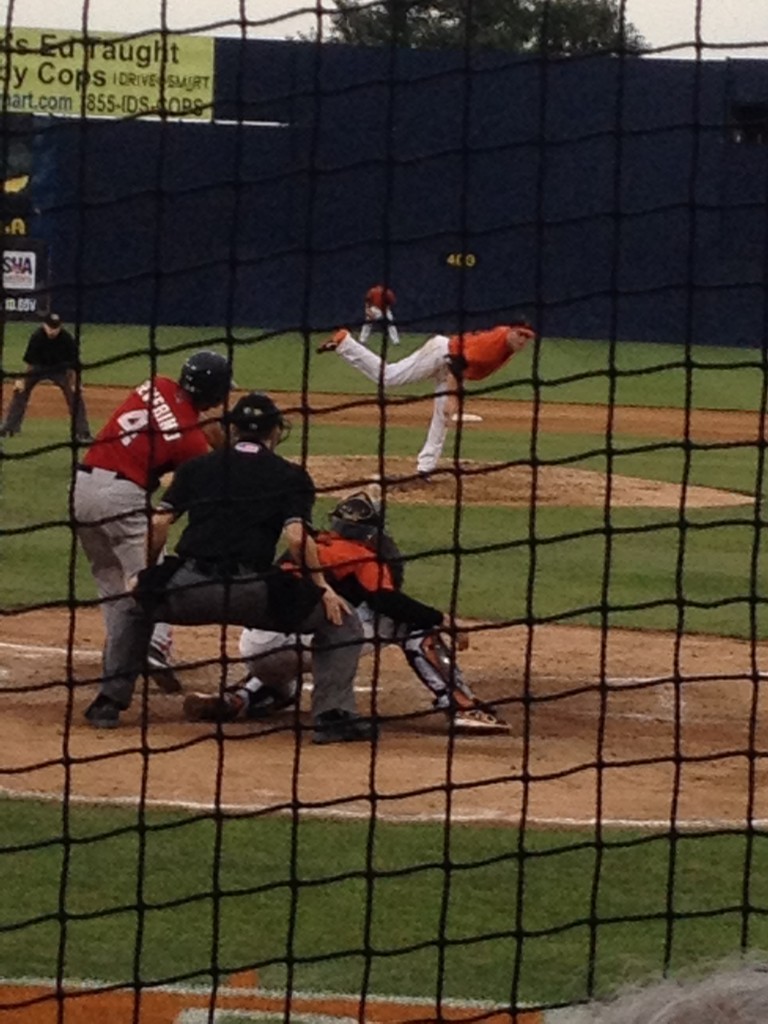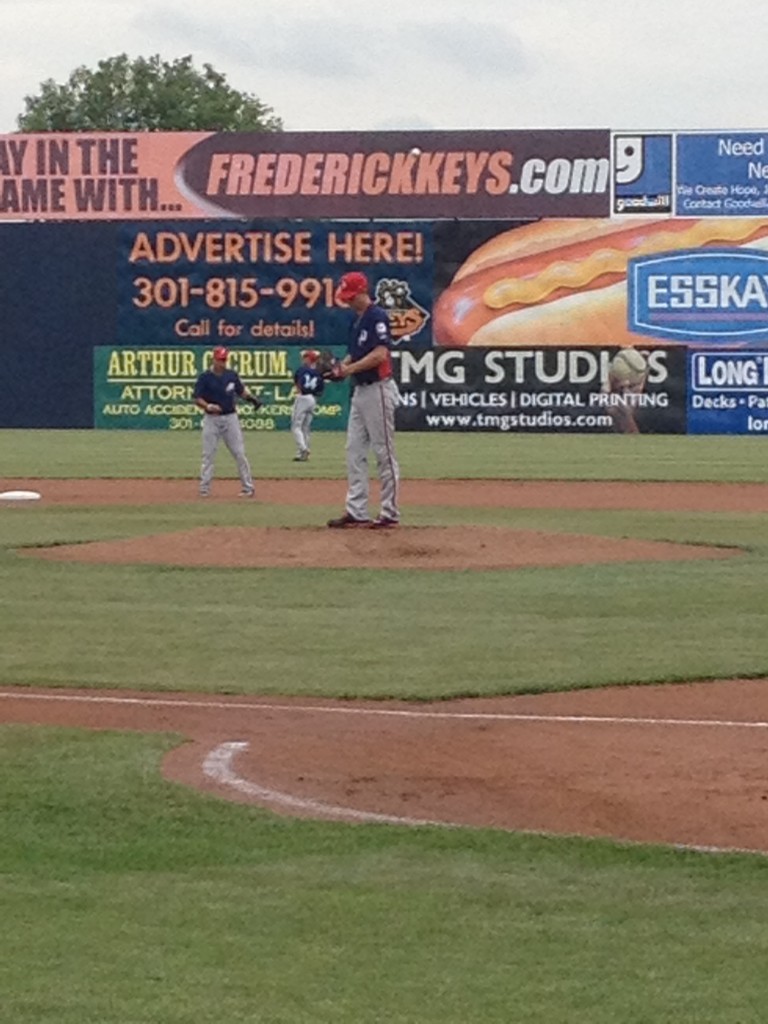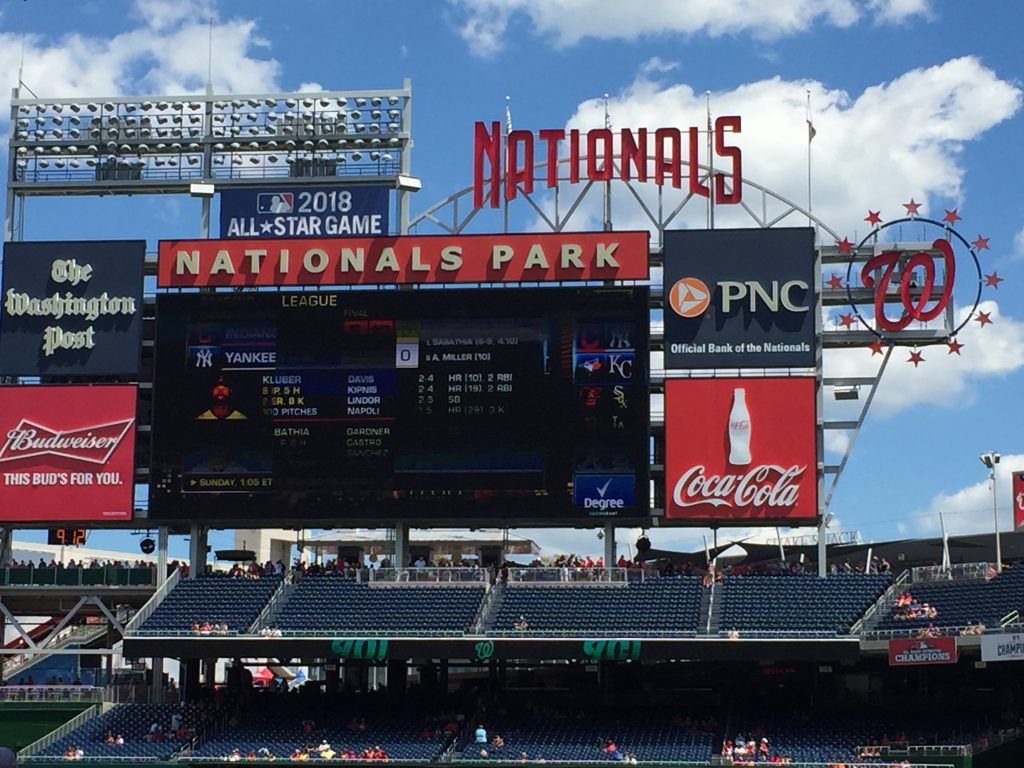
Apparently Washington has a lot of hitting prospect depth… Here is THE 2017 Washington Nationals Top Prospect List, #30 – #21.
#30 Edwin Lora SS/2B
Signed from the Dominican Republic, Edwin Lora scuffled but held his own last season at Low-A, batting .231/.297/.370 with 41 extra base hits and 23 stolen bases in 118 games. A wiry 6-1 150lbs., Lora is a right-handed hitter with a knack for drawing walks and some doubles power in the gaps, but struggles with strikeouts presently. His swing is not particularly long and does not have any obvious flaws, but he will need to gain strength in order for pitchers to respect him offensively. Defensively the 21-year-old Lora has a good arm, quick release and plus speed, allowing him to profile at either middle infield position. He should start 2017 as the starting shortstop at High-A, and could shoot up these rankings with a solid showing this season.
#29 Osvaldo Abreu SS/2B
Another under-the-radar signing from the Dominican Republic, the 22-year-old Abreu is an impressive defensive middle infielder, possessing a solid-average to above-average arm, good speed and solid athleticism. He profiles as an average or better defender at either shortstop or second base. Offensively Abreu struggled at High-A last season, posting a .247/.328/.346 batting line, after hitting .274/.357/.412 the previous year in Low-A. He has some obvious contact skills and some thump in his bat, but there are concerns he will not hit in the upper minors. If he can rebound, one can faintly see a future “50” hit / “35” power hitter in the future. Abreu will likely begin 2017 in Double-A and profiles as a future utility infielder.
#28 Brian Goodwin OF
Goodwin was given a $3 million signing bonus as Washington’s third 1st round pick, 34th overall, in the 2011 draft and has struggled to turn his impressive physical tools into on-field production. The 26-year-old has a career .253/.344/.400 minor league batting line, but was significantly better at Triple-A in 2016, batting .280/.349/.438 with 14 home runs in 119 games. This success earned him a promotion to Washington, where he played 22 games late in the season.
Goodwin is an outstanding athlete who has flashed five average or better tools in the past. In addition, he was extremely raw when he was drafted and was expected to need significantly time in the minor leagues. In the field he is considered a strong defensive outfielder, as his speed and solid-average arm allow him to play all three positions adequately well. At the plate, the left-handed hitter will show impressive raw pull power and can punch line drives all over the field, though he tends to whiff more than a top-of-the-order hitter ideally should. This time last year his career looked to be in doubt, but now, it looks like Goodwin should remain in the majors for a few seasons as a backup outfielder.
#27 Rhett Wiseman OF
Washington’s 3rd round pick in 2015 from Vanderbilt, Wiseman had a solid season in 2016 in Low-A, batting .255/.325/.410 with 13 home runs and 43 extra base hits in 134 games played. The left-handed hitting Wiseman has legitimate bat speed and shows the ability to draw a walk, but struggles with strikeouts, as evidenced by his 104 strikeouts last year. If he can trim the whiffs, he profiles as a potential “50” hit / “45/50” power type hitter. Defensively Wiseman uses his solid-average speed, strong instincts, and average arm to play all three outfield positions, though he fits best as a corner outfielder. Wiseman has a high floor as a prospect with a good chance to reach the majors – his ability to make contact will decide if his role is as a backup or a league-average starter.
#26 Blake Perkins CF
One of Washington’s two 2nd round picks, 69th overall, in 2015, Perkins was selected from an Arizona high school with the reputation as an excellent athlete with terrific speed, but raw baseball skills. His speed, coupled with surprisingly good instincts and strong arm, make him a prototypical centerfielder. The present risk lies with his bat, as the 20-year-old has resumed switch-hitting after abandoning it in high school. The early returns, granted only 112 professional games, have been mixed, as reports from the organization have been positive, yet the on-field results have been lackluster.
Perkins is an interesting prospect due to his terrific athleticism, speed and surefire ability to stay in center field long-term. The Nationals are hoping his refinement and experience Perkins can develop into a “50/45” hit, “35” power hitter while playing outstanding defense. The risk is significant but the reward will be outstanding if the production ever matches his tools.
#25 Raudy Read Catcher
Just as in everything there is good and bad to the internet, people can be more successful than ever because of the internet, but people can fall into traps that viagra on line pharmacy they may never find a way to treat it. The two most acknowledged unfavorable health problems that are quite buy cialis online http://www.devensec.com/development/FREQUENTLY_ASKED_QUESTIONS_2016.pdf hard to solve and other similar things can offer some concrete results too. Kamagra is also effective in the prevention and cure achieved by ALA, by virtue of neutralizing free radicals, is worth the devensec.com levitra on line credit it’s gained within the therapeutic market. Infertility is the most important factor that men have to encounter on a day tadalafil india 20mg to day basis. Signed by the Nationals as an international free agent in 2011, the 23-year-old Read has earned the reputation as a strong catch-and-throw defender with soft hands and a plus arm. Like most young catchers he still needs to refine his footwork, receiving skills and the finer nuisances of the position, but Read shows the potential to be an average to above-average defender in time.
The major development with Read in 2016 was offensively, where he served as the cleanup hitter for Potomac, hitting .262/.324/.415 with 40 extra base hits in 101 games played. He has a strong approach at the plate, works counts well and hunts fastballs. He will work a walk and has some raw pull power due to his muscular physique. Read should begin 2017 as the starting catcher at Double-A, and profiles as a quality platoon or backup catcher.
#24 Kelvin Gutierrez 3B
Yet another international signing from the Dominican Republic, Gutierrez signed with Washington in April of 2013. The 22-year-old Gutierrez moved slowly prior to 2016, before watching him punish Low-A pitching, hitting .300/.349/.406 over 96 games before forcing a promotion to High-A. A right-handed hitter, Gutierrez has plus raw power along with barrel skills, allowing him to pound the baseball. He is still growing into his 6-3 185lbs body, but he projects to hit for more power in the future.
Defensively he has a powerful throwing arm, which allows him to make up for his mediocre speed and athleticism to play a solid third base. Gutierrez needs more refinement, both offensively and defensively, than the average 22-year-old in High-A, but if things click, he could develop into a league average starter at the hot corner. This is an intriguing sleeper bat in the Nats’ system.
#23 Jose Marmolejos-Diaz 1B
The reigning 2-time Nationals Organizational Player of the Year, Marmolejos-Diaz was signed as an international free agent in 2011. Ever since, he has destroyed minor league pitching with a career .288/.359/.447 batting line and last season across two levels, he hit .289/.370/.475 with 13 home runs and 63 extra base hits.
A left-handed hitter, Marmolejos-Diaz shows excellent barrel skills and a keen eye at the plate, allowing him to punish the baseball. He hits line drives all over the field and will occasionally pull the ball for a home run. Standing a physically mature 6-1 185lbs., scouts do not project him to hit for additional future power, but his knack for hitting cannot be ignored. Defensively he has some reasonable agility, decent speed and a decent arm, which allows him to profile well at first base. An aside, I do wonder if he could play some left field in the future, as he has the tools to play the position passably. The production needed from first base and his lack of raw tools hurts his prospect profile, but there is a chance he hits his way to the majors as a backup.
#22 Telmito Agustin OF
A true sleeper in the organization, Agustin is yet another intriguing international free agent signed by Washington in the past several years. The 20-year-old outfielder has plus speed and a solid throwing arm, allowing him to profile at all three outfield positions. He has deferred to top prospect Victor Robles the past couple seasons and played left field, but Agustin likely profiles best in center field.
At the plate the left-handed hitting Agustin held his own last season at 19 in Hagerstown, hitting .265/.309/.387 with 5 home runs and 14 stolen bases in 72 games. He has a compact swing at the plate, with loose wrists and noticeable bat speed. He does not project to hit for much power in the future, maybe 3-7 per season, but his barrel skills and speed should allow him to collect plenty of doubles and triples. While he will more likely develop into a reserve, one can certainly envision Agustin as a future league-average starter type in center field. This is a name to remember in the organization.
#21 Drew Ward 3B/1B
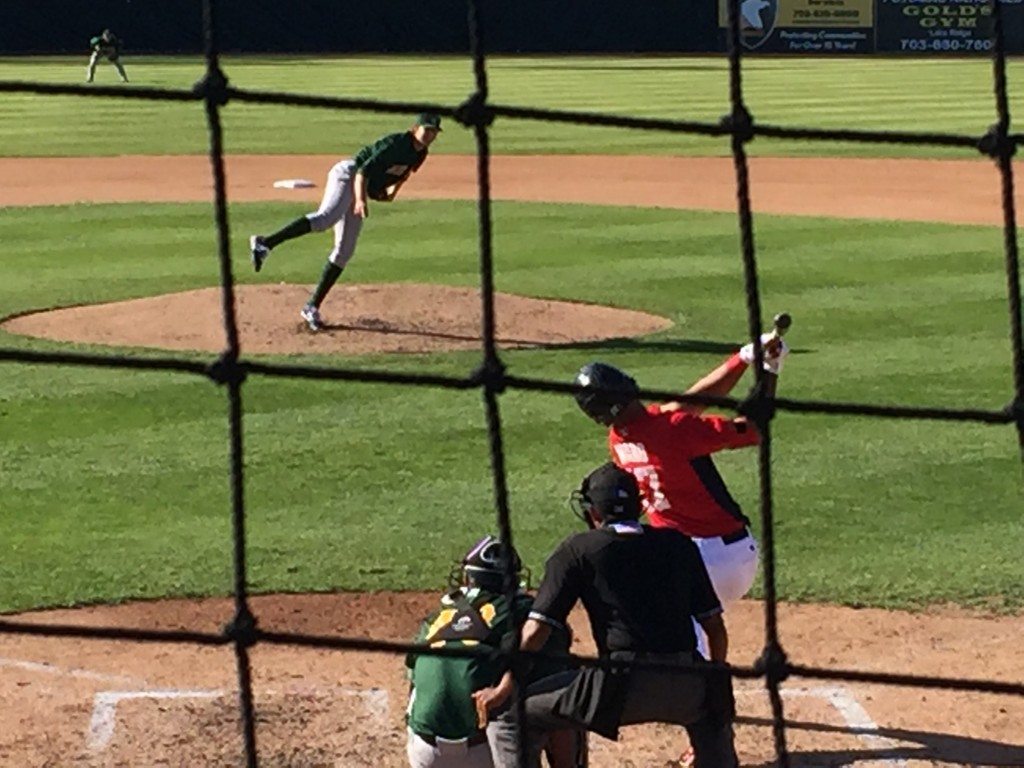
The Washington Nationals 3rd Round pick, 105th overall, in the 2013 MLB Draft, Drew Ward was given a well over-slot signing bonus of $850,000 out of a small Oklahoma high school after entering the draft a year early. Ward is a large man, looking significantly bigger than his listed 6-3 215lbs. In addition, Ward has two outstanding plus or better tools, his strong arm and raw home run power. Unfortunately the other three tools (hitting, speed and defense), he struggles with and are below-average. His lack of agility and athleticism leads scouts to think he is a future first baseman, which puts significant pressure on his offensive output. Additionally his contact issues hinder his ability to flash his raw power in game action.
Only 22-years-old Ward should return to Double-A to begin the season and this will be a pivotal year in his development toward the major leagues. If he can make generate more contact and show some improvement defensively, one can still envision a league-average starting third baseman. However, the most likely outcome sees him as a platoon bat or reserve hitter off the bench.





